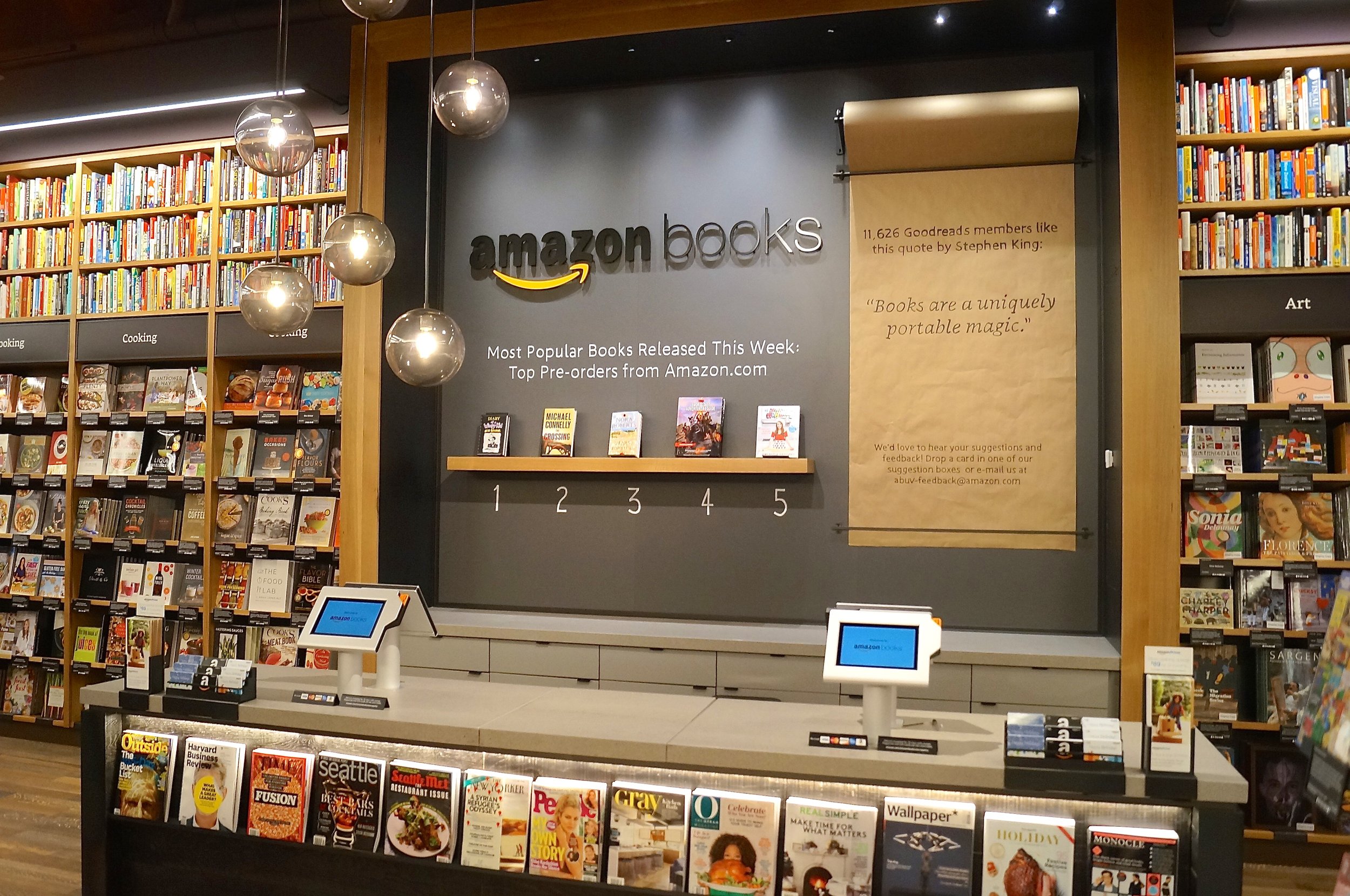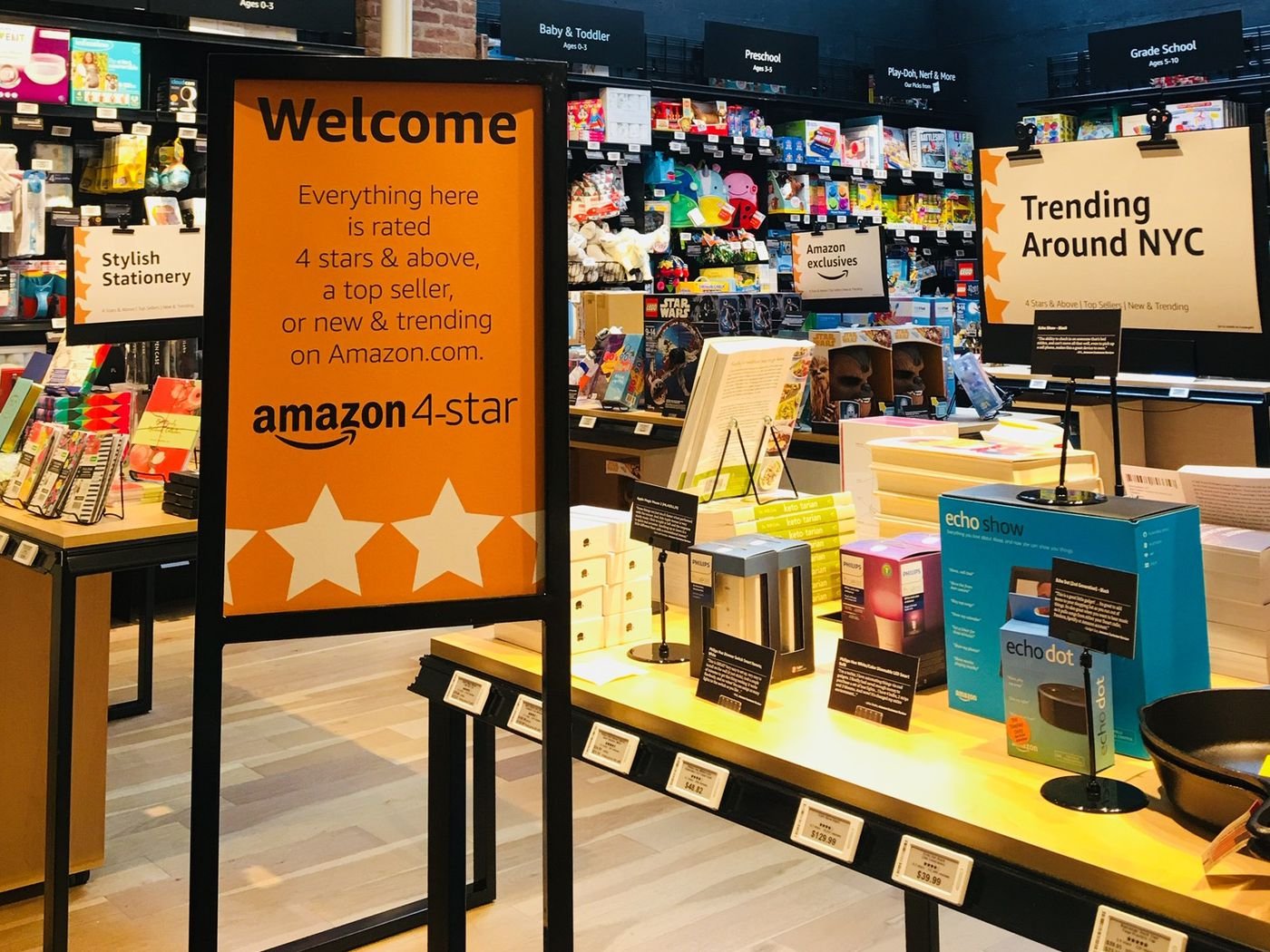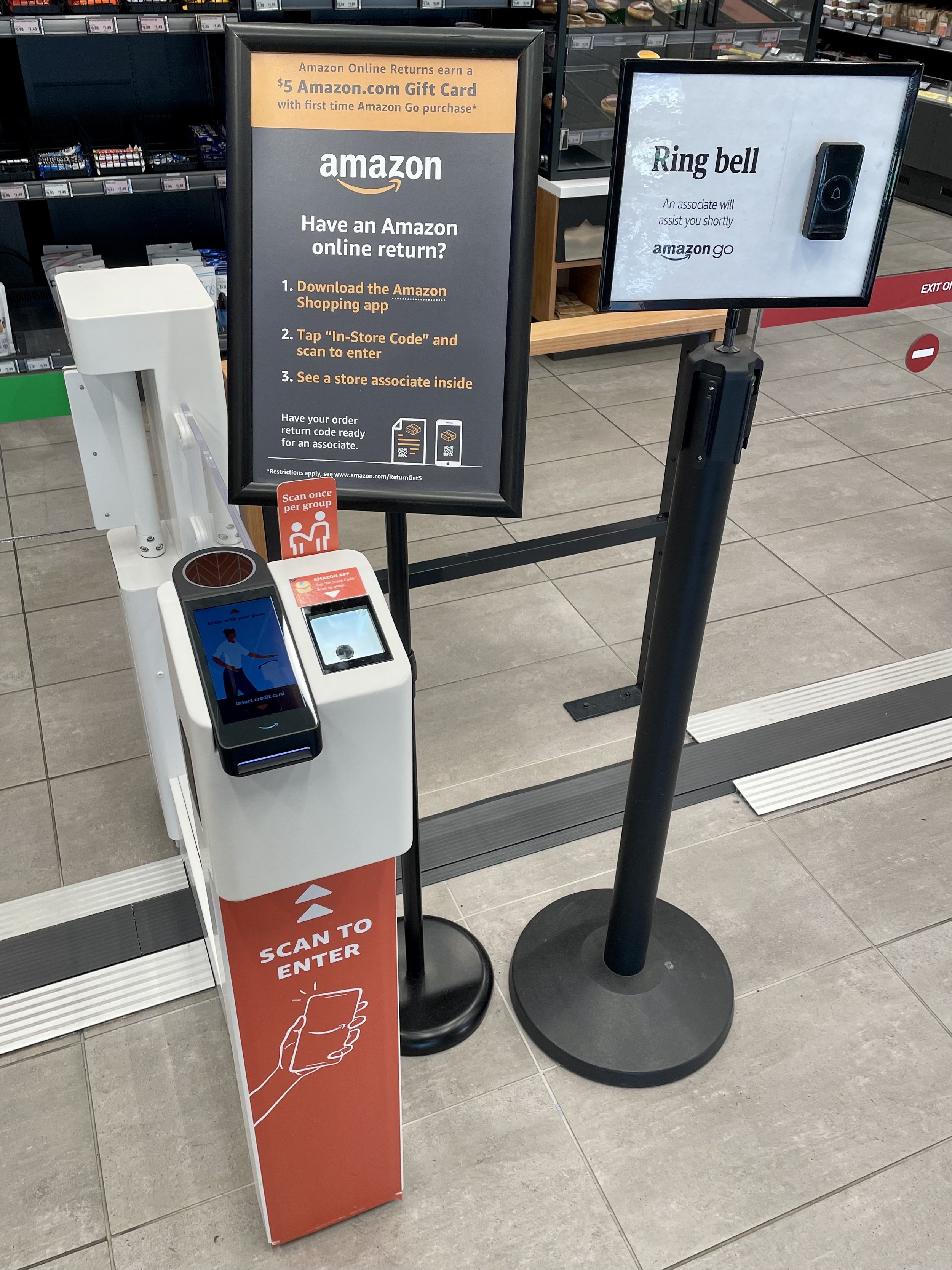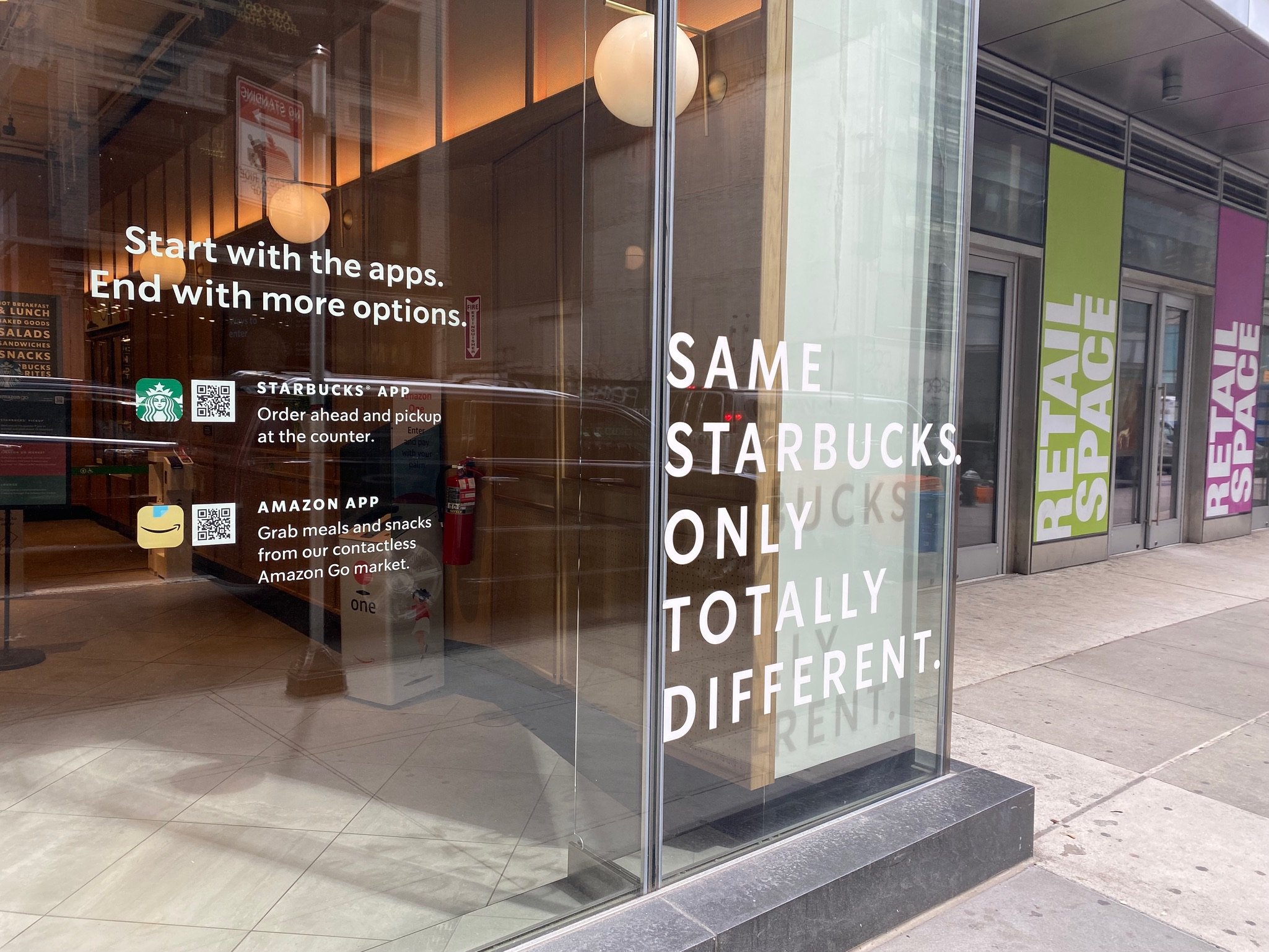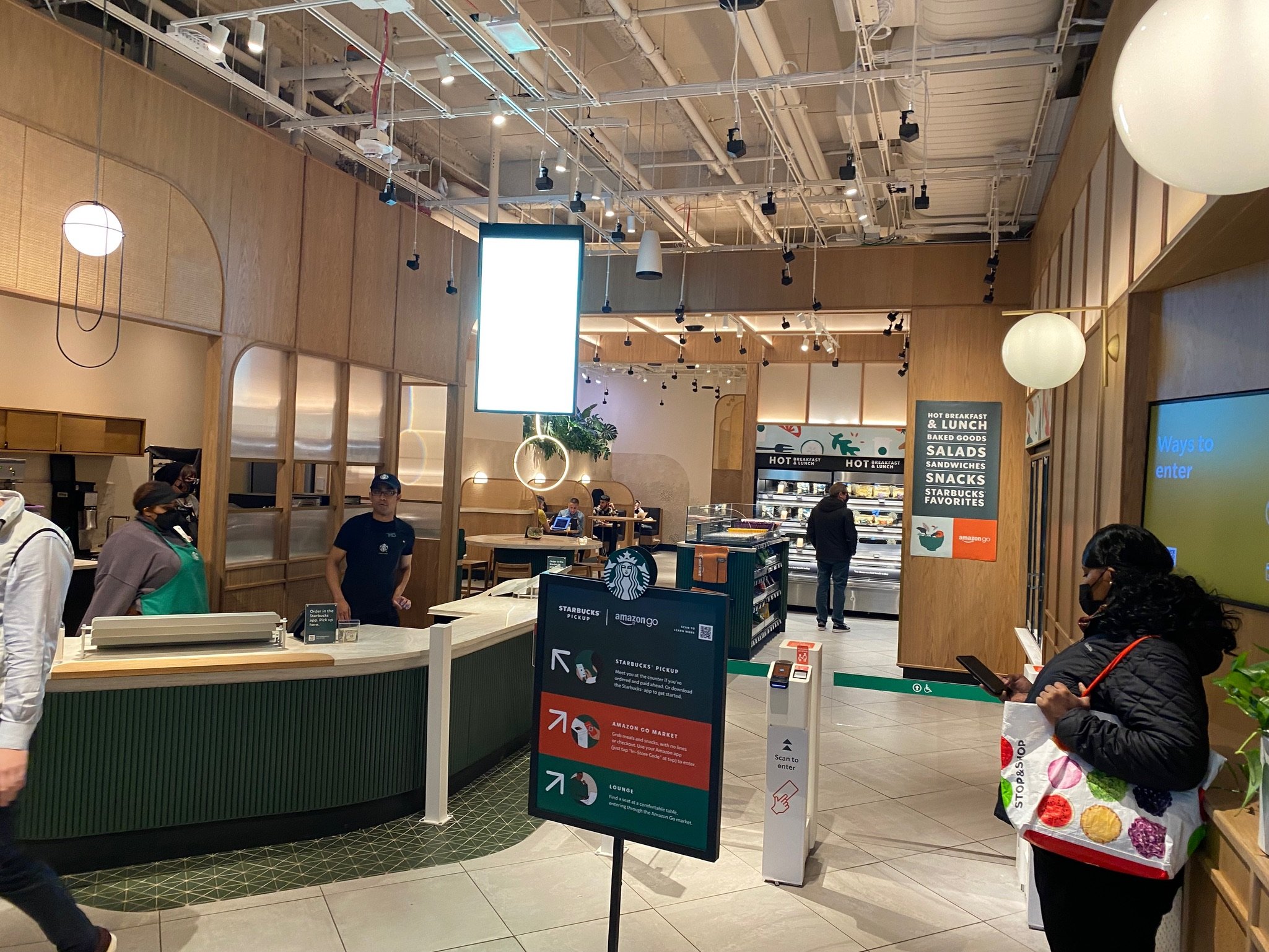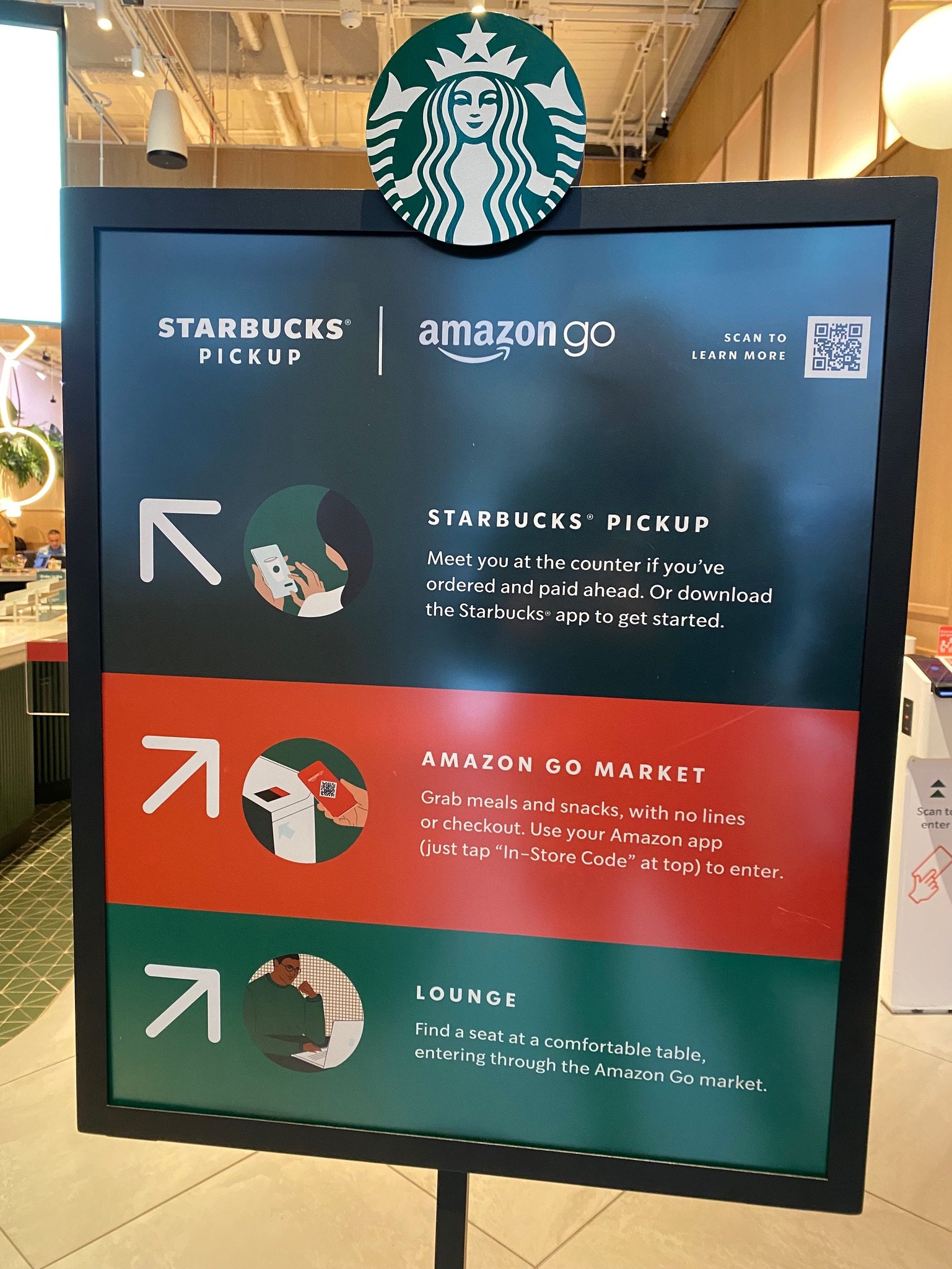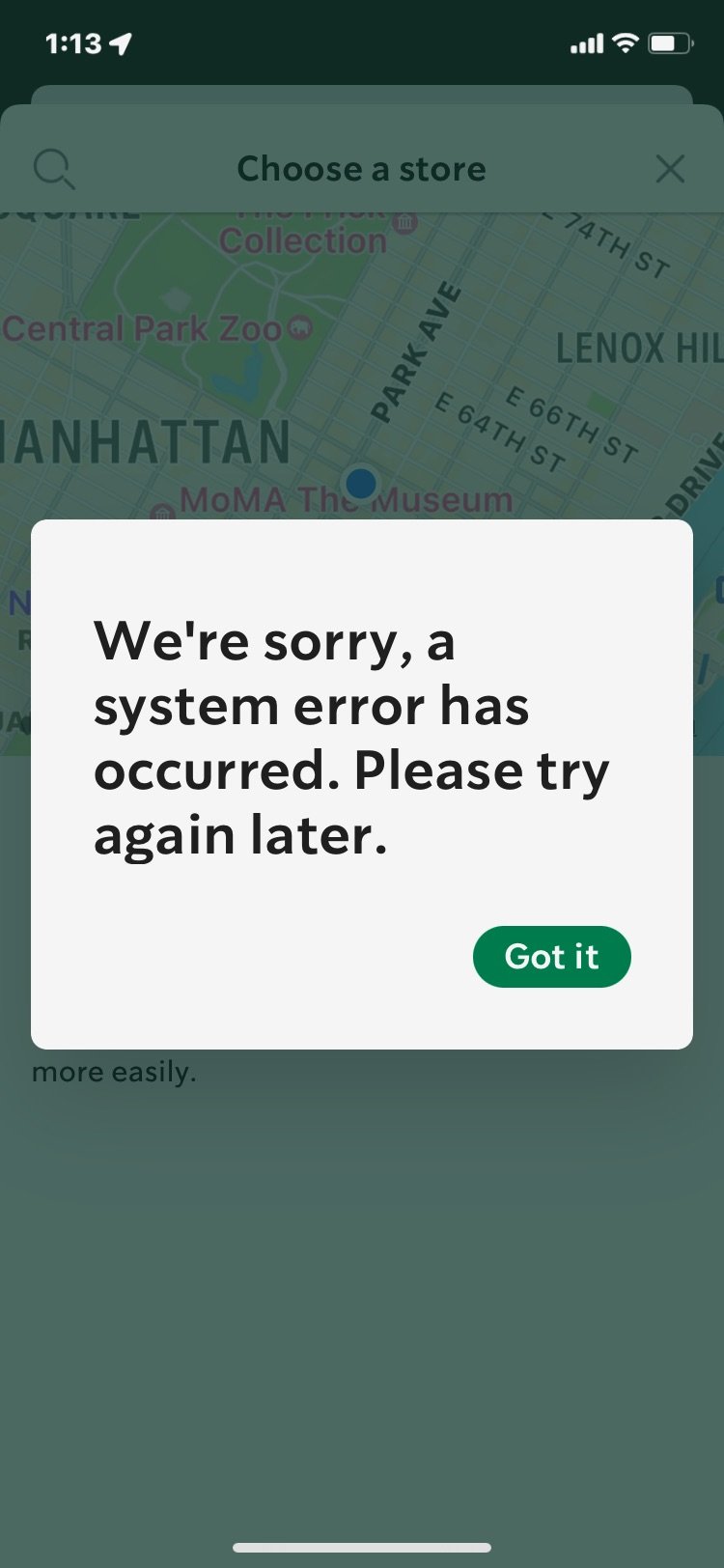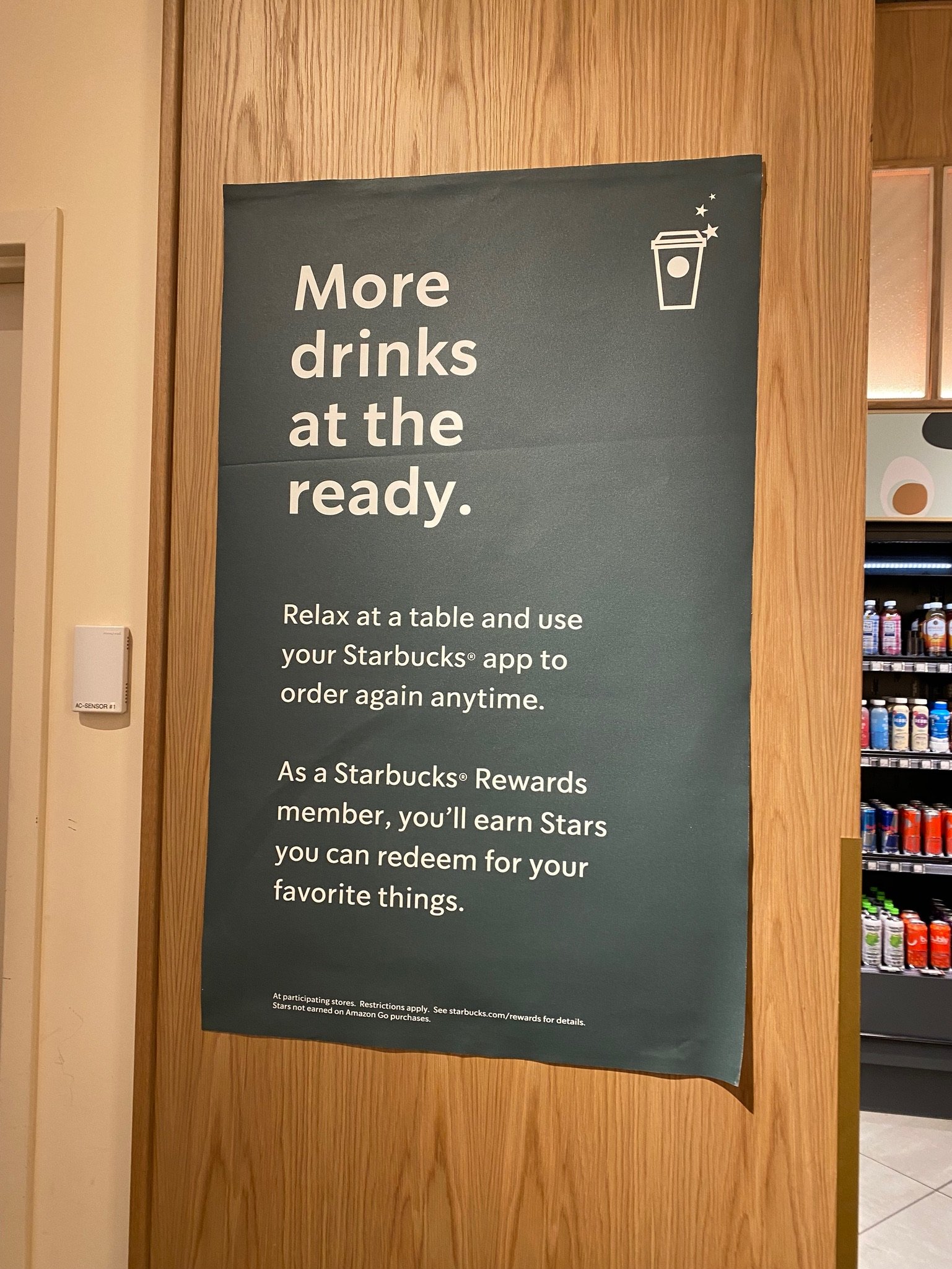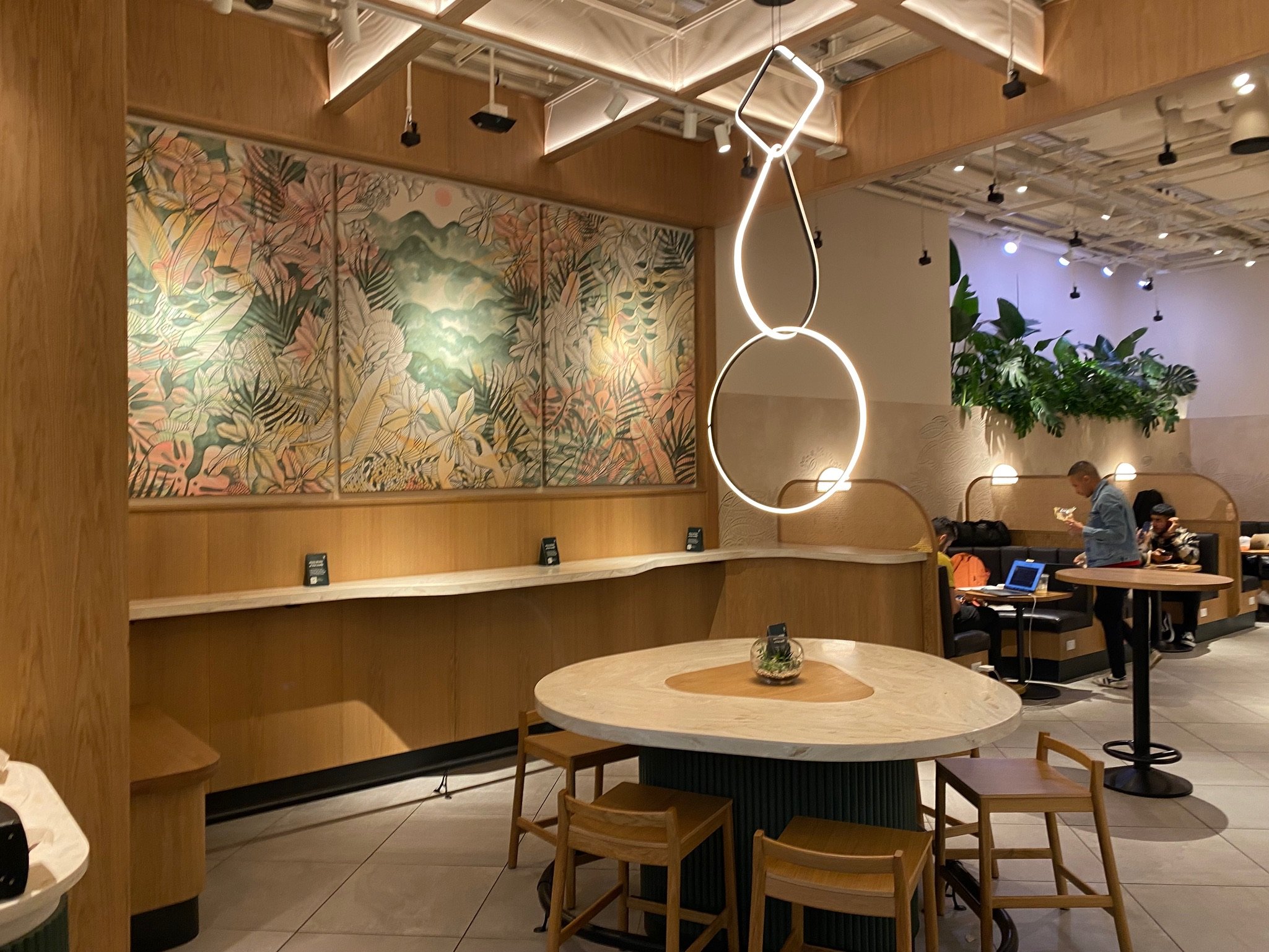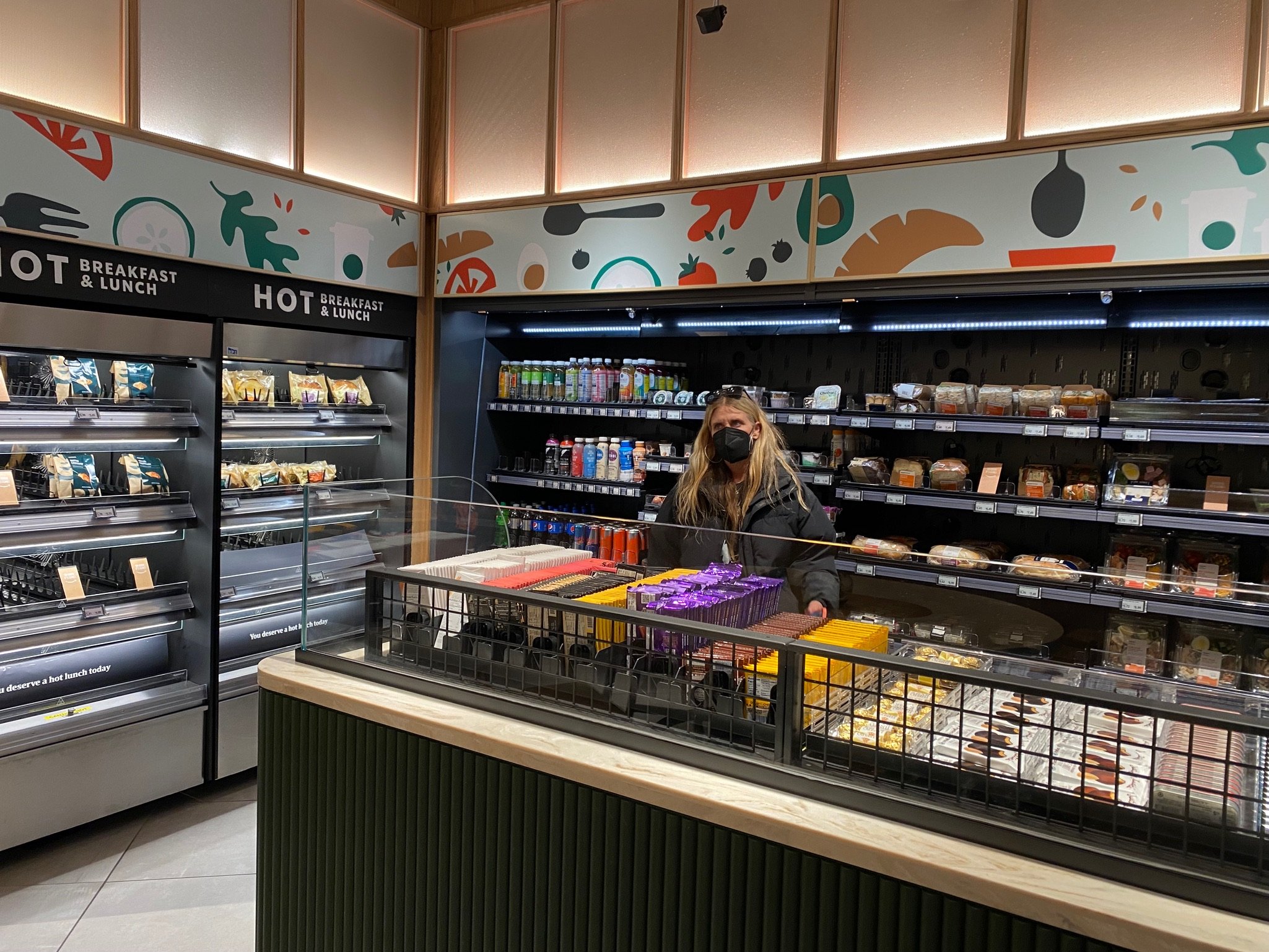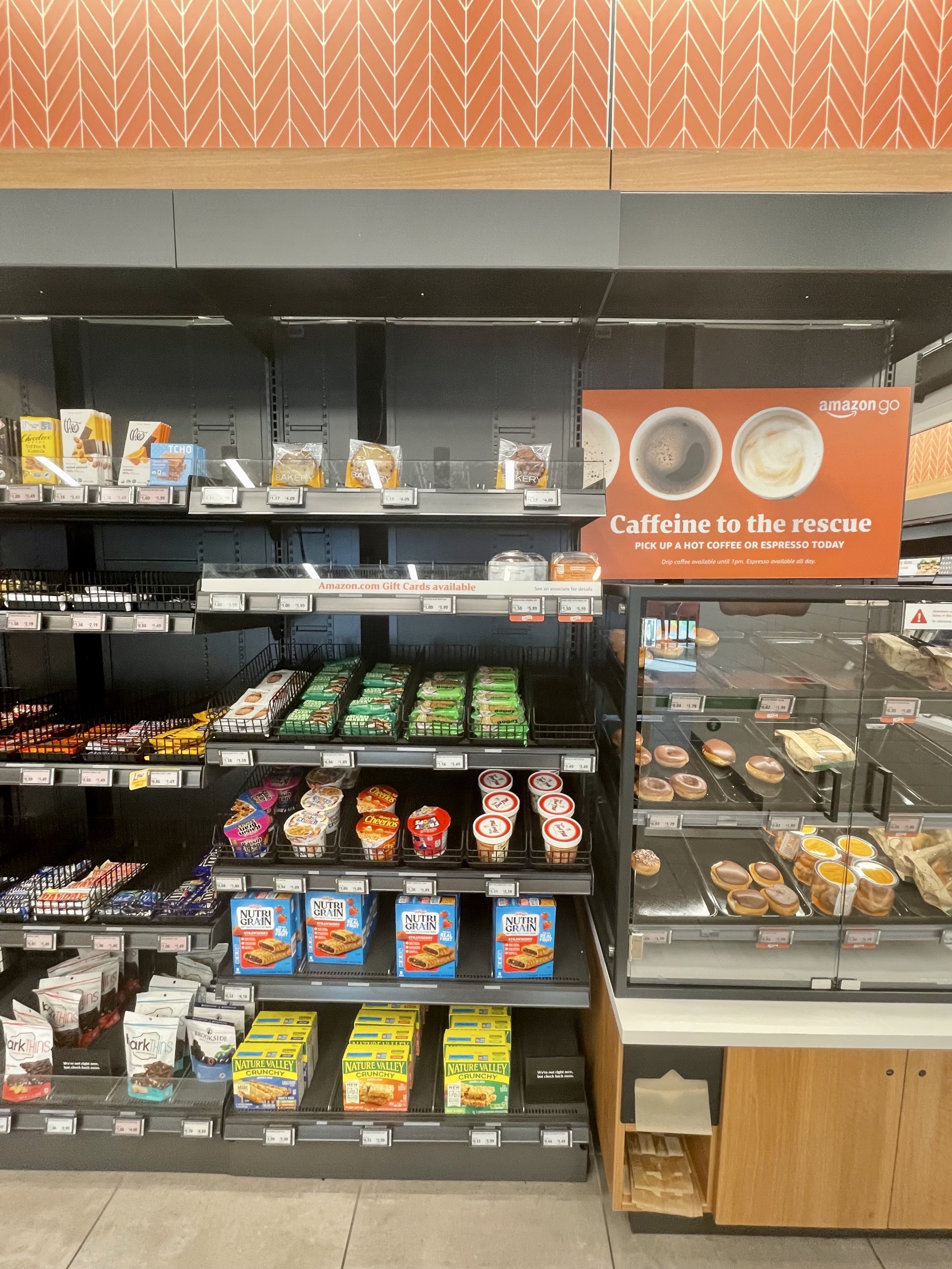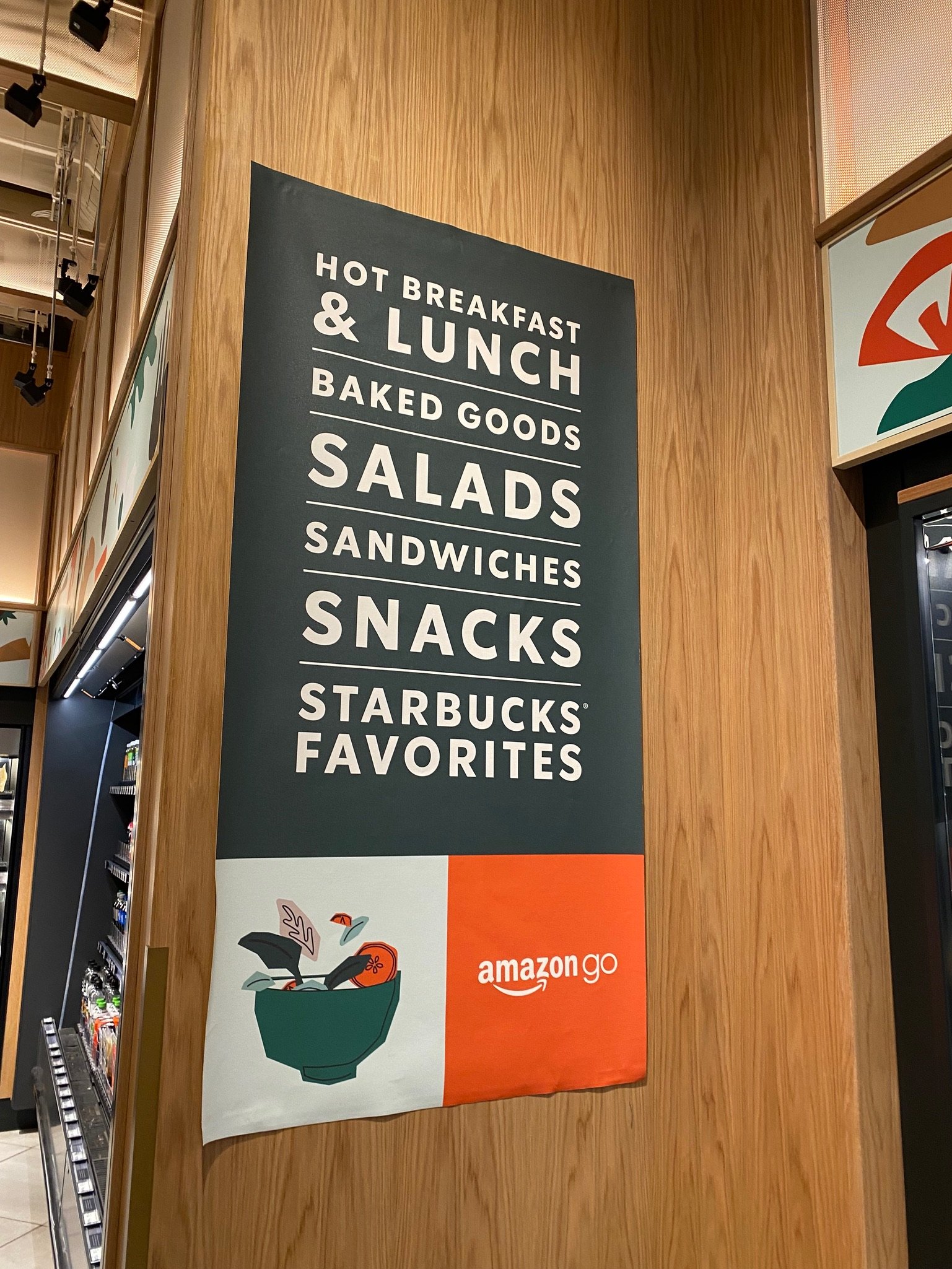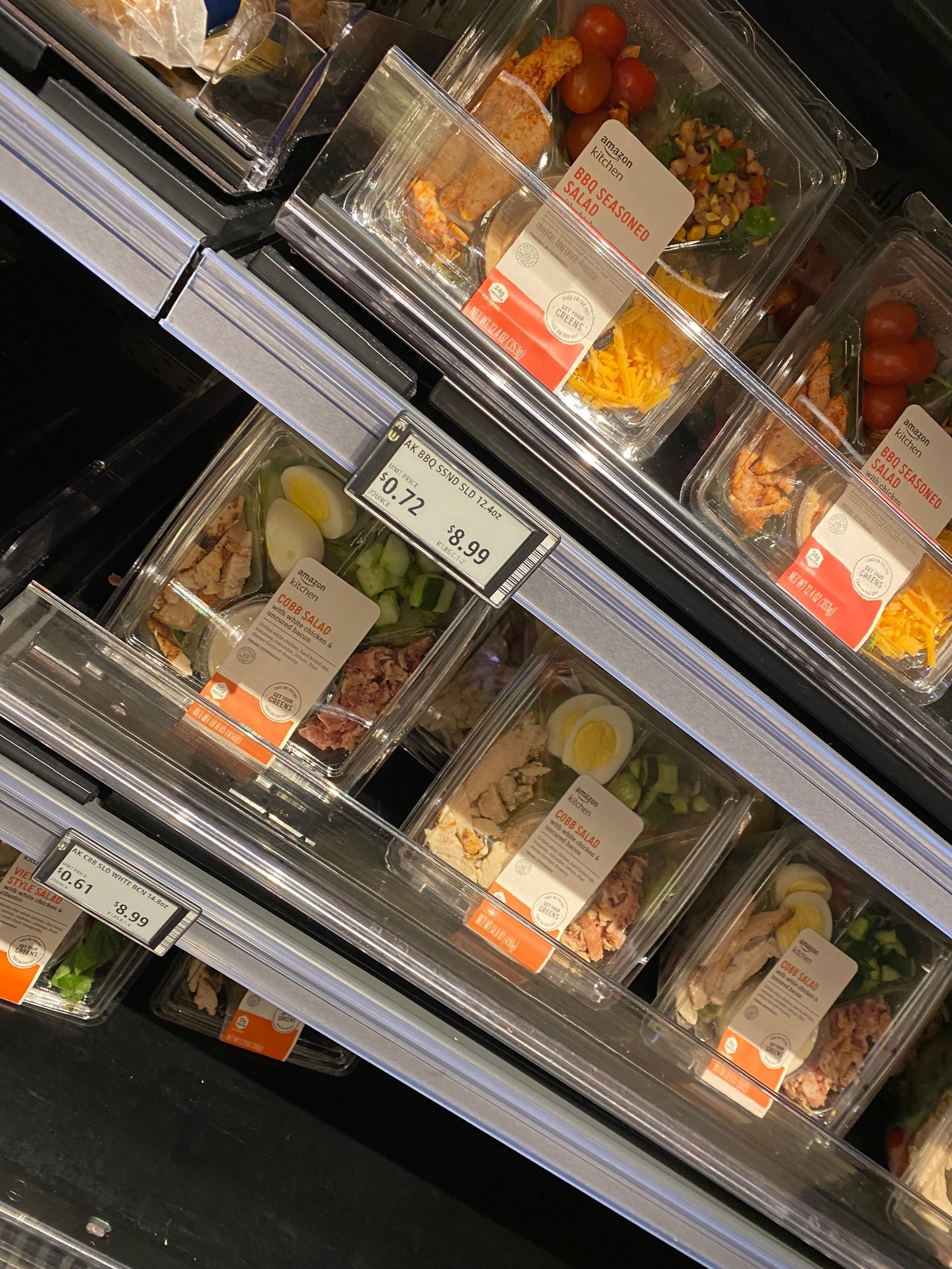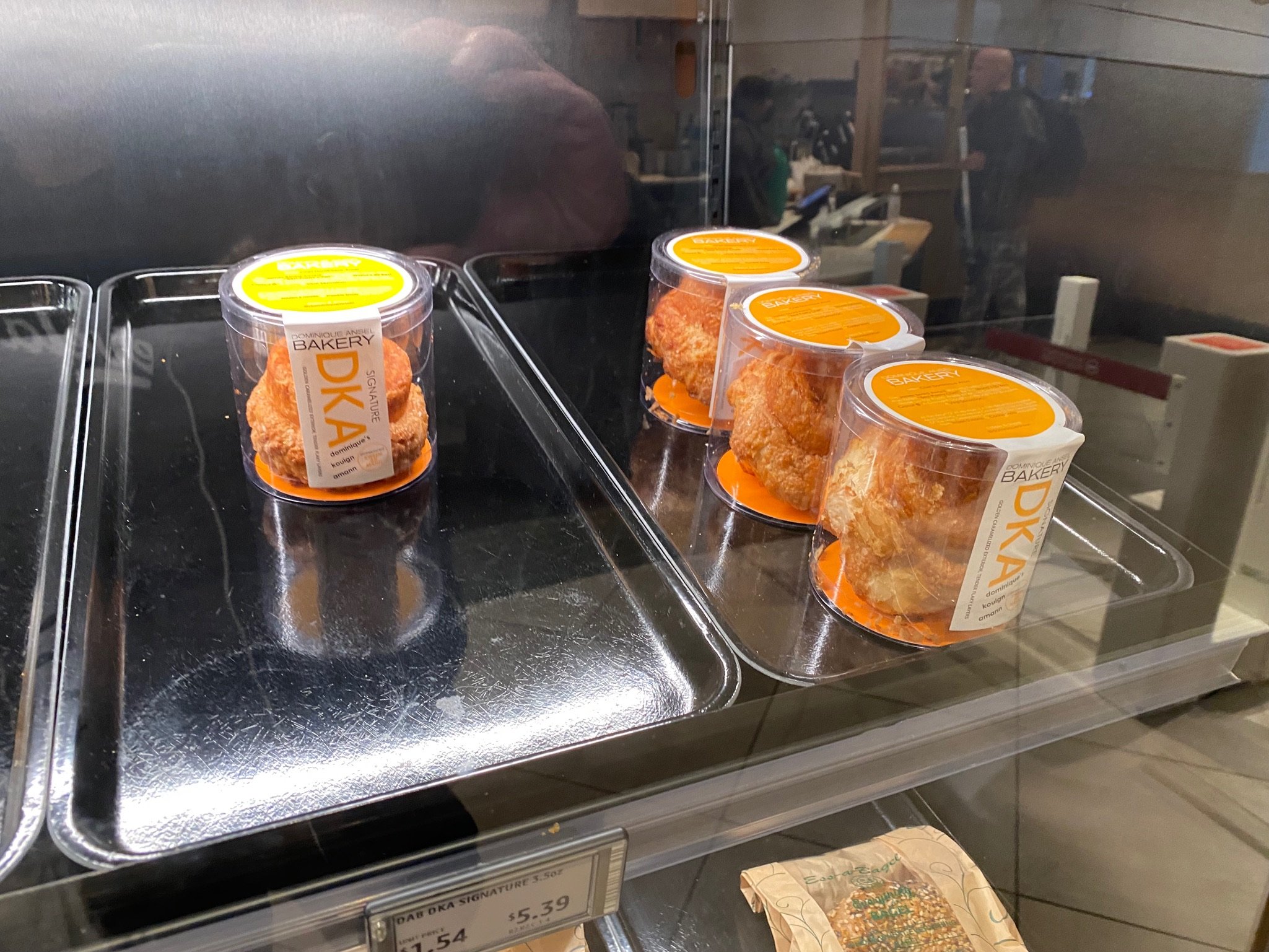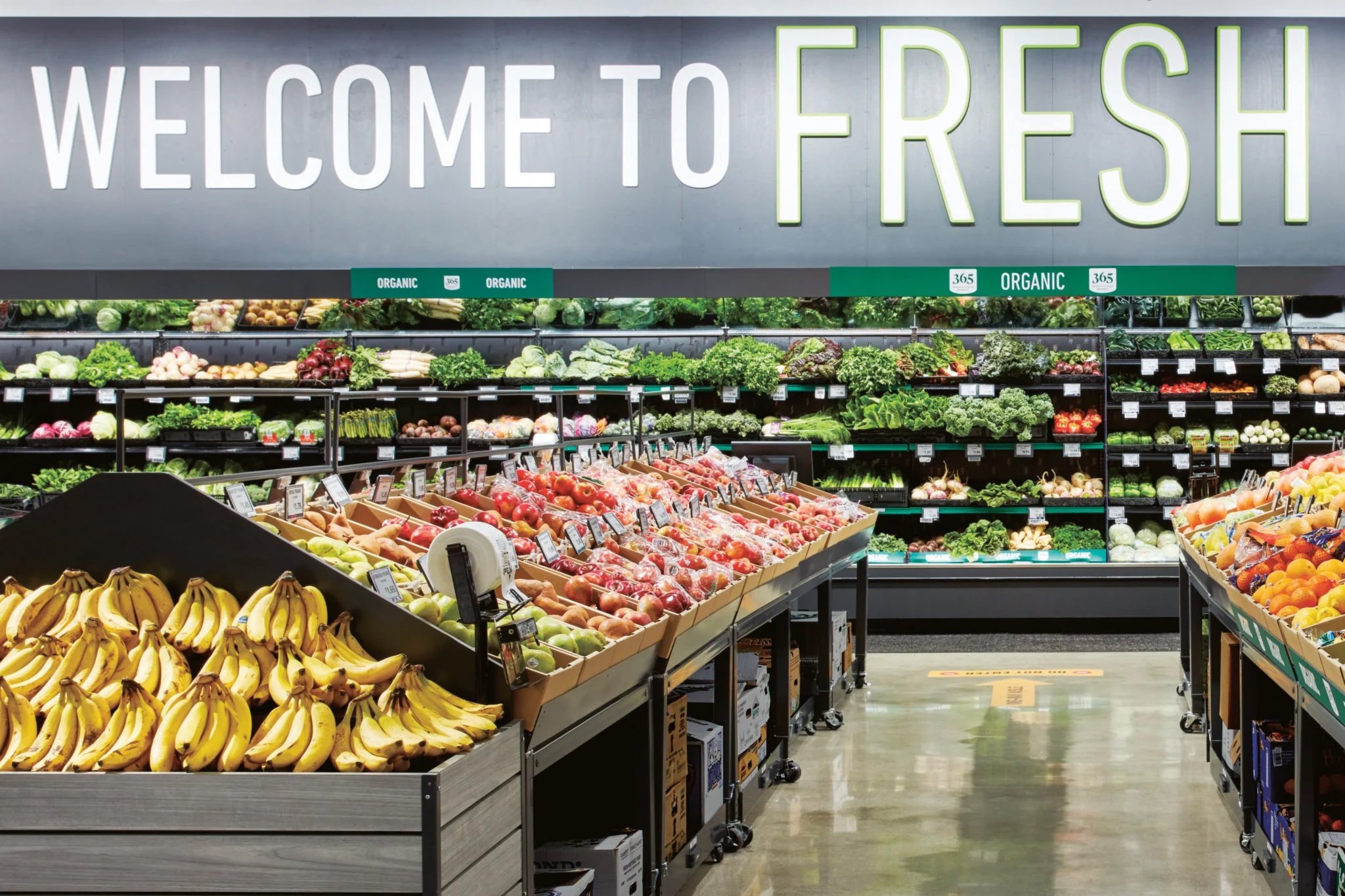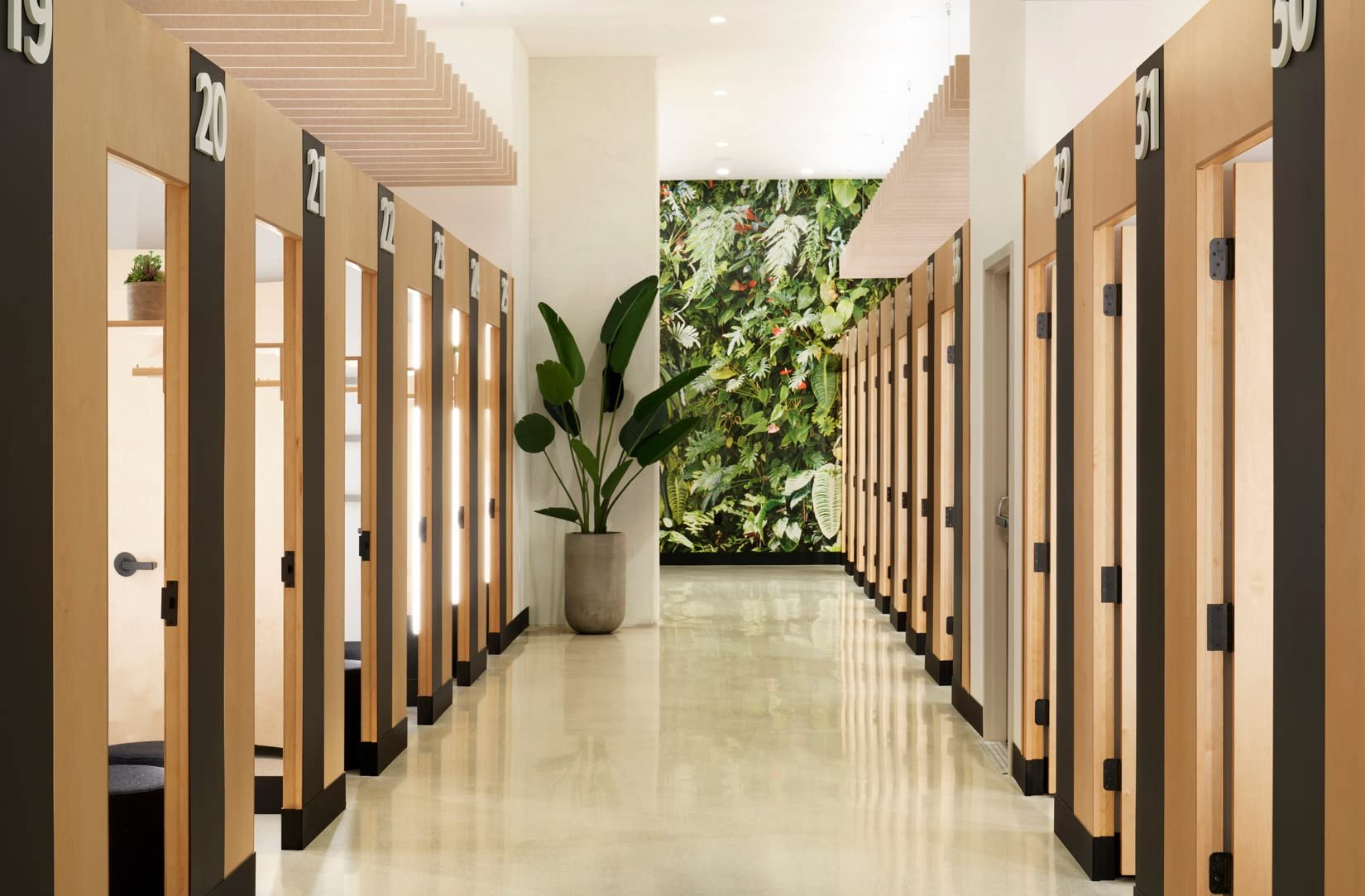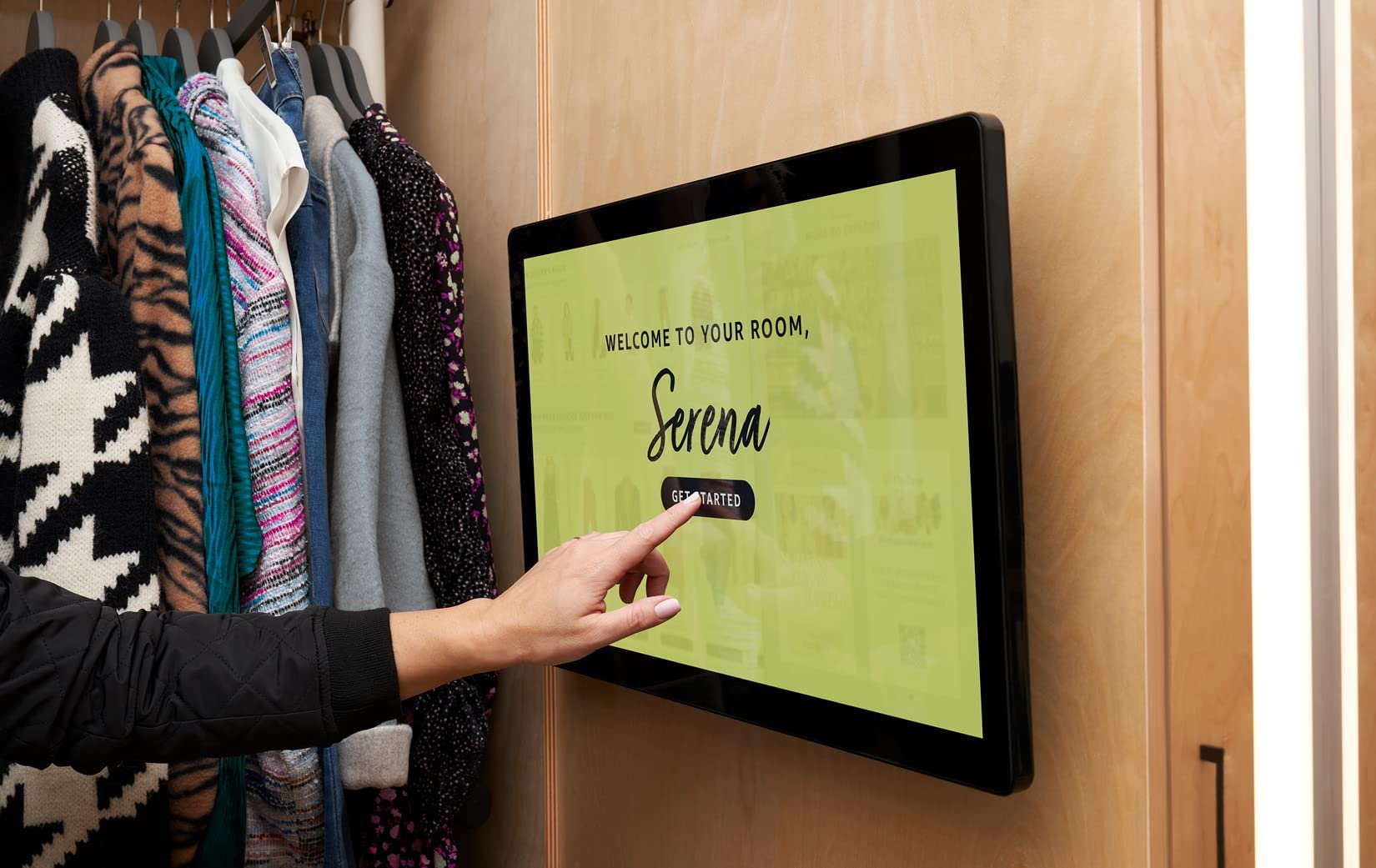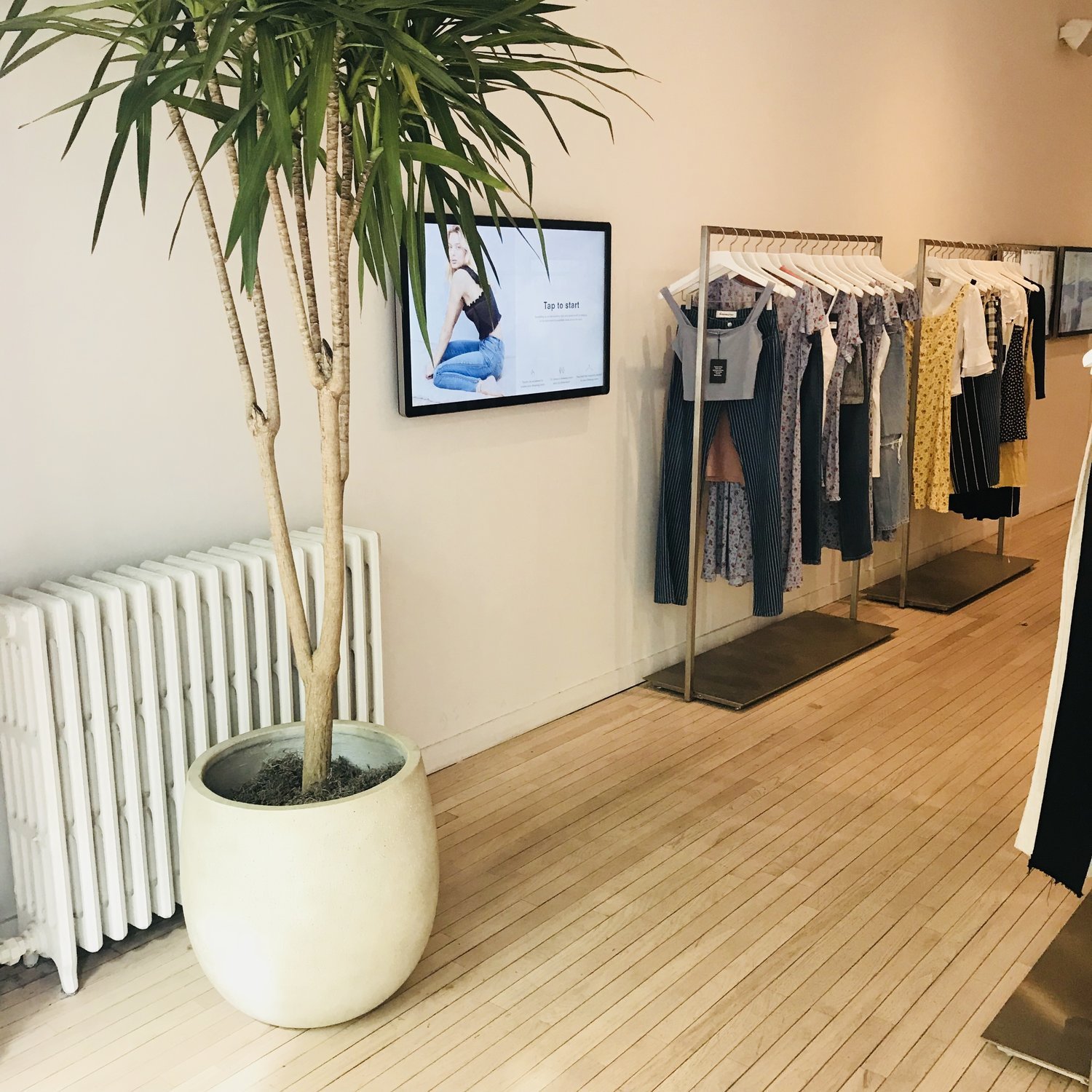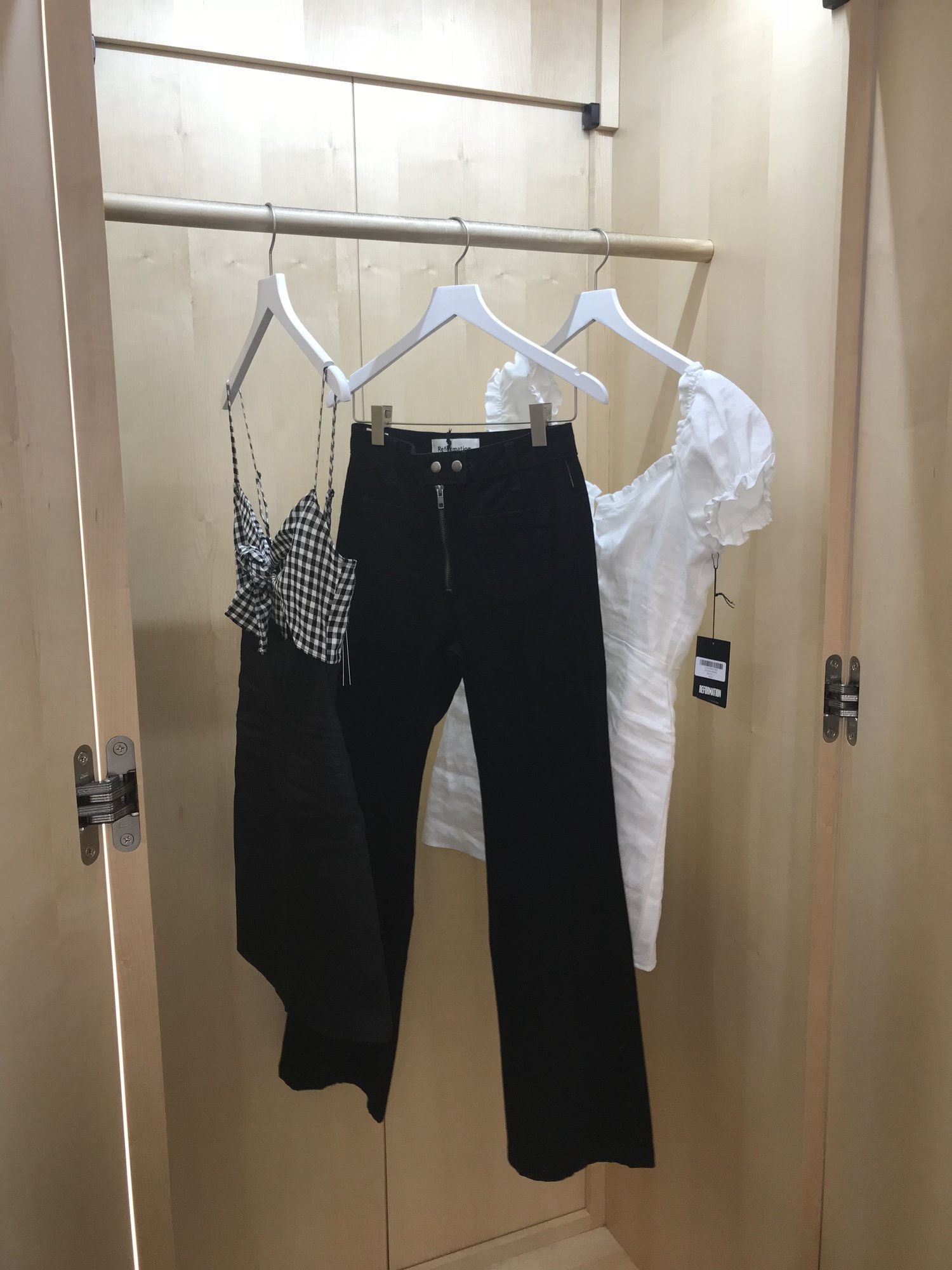The pandemic has accelerated our dependence on Amazon’s fast, safe and easy shipment of virtually anything for most Americans. Since they’ve monopolized the home delivery market, they continue to trial and error IRL categories, hoping to seamlessly merge our reliance on their technologies, whether shopping online or in-store.
You've probably seen their trial brick-and-mortar locations if you live in the greater NY or LA areas. There were Amazon books (a nod to the company's humble beginnings) and Amazon 4-star (one of their first IRL shops where you could pick various items featured as their most well-rated products and drop off returns). However, in March this year, Amazon began closing all those locations and pop-ups to focus on grocery and fashion categories.
Amazon’s retail ambitions have primarily felt like small-scale trials compared to the massive scale of its online operations. Now that they’re focusing on convenience, grocery and fashion, will these stores fare better than their previous attempts?
We checked out a couple of their convenience, Amazon Go locations, and their hybrid Starbucks/Go store to see how they're attempting to bring more ease to in-store experiences.
It’s funny to think about how Amazon can make a “convenience” store even more convenient. Like its namesake, the Amazon Go stores are like your regular corner stores, where you can grab and go pre-made sandwiches, salads, pastries, coffee, and other processed snacks.
Before entering the store, you scan a QR code from your amazon app linked to your account and “just walk out” with your desired goods via touch-free smart checkout technology. They utilize hundreds of cameras and sensors to account for what people buy. The items automatically get charged to your Amazon account, removing the need for human cashiers, on-the-floor personnel and reducing customer wait time.
The Amazon Go/Starbucks hybrid location (59th & Park) doesn’t integrate Amazon & Starbucks' underlying payment or checkout systems. Customers use the Starbucks app to order items for pickup and the Amazon app to shop the marketplace. Another new tech upgrade, both the Amazon Go and Starbucks locations feature an Amazon one kiosk, where shoppers can set up a secure way of paying via their account using the palm of their hand.
The designs of the Amazon Go aren’t groundbreaking or overly appealing; they look like your average convenience store but with an electronic gated entry. The hybrid Go/Starbucks location looked and felt more elevated, but we believe that was due to Starbucks' integrated design.
The most shocking aspect for this tech giant was the lack of products stocked on each aisle, with many containers bare. When you think of Amazon, you think of their giant warehouses packed with items. While they did carry your average corner store snacks, we also thought there would be a broader range of categories like bathroom, cleaning, and personal care products usually stocked at CVS or Duane Reade.
So, if Amazon Go focuses on the food, how do their “fresh” products stack up against other quick-serve spots? The pre-packaged foods section of sandwiches, salads, and pastries was as appealing as convenience store food sounds. The Amazon Go products made Starbucks pre-made sandwiches sitting beneath heat lamps seem gourmet, yet the prices seemed to be above market averages.
The ingenuity of these stores begins and ends with their “just walk out” cashier-less technology. Once that novelty wears off, you’re less likely to return.
Amazon continues to falter IRL because of the focus on advancing tech rather than the quality products and customer interaction. When a brand prioritizes its technology, it infringes on our human experience and challenges the overall customer journey.
The goal for a store like Amazon Go should be like other NYC quick-serve favorites (Sweetgreen, Cava, even chipotle) to get delicious high-quality food fast.
Yet, at Amazon Go, it seems for the designers, if you've figured out how to enter through the digital gate, you’ve accomplished the goal. Their goal, not the consumer's goal.
While every New Yorkers' dream is a seamless and quick exit without wait time, further eliminating any more frustration throughout our day, there is something to be said about the mundane and passive human interactions we thirst for, especially post-pandemic. The prosaic connection of complaining with your neighbor in line, asking a worker for their opinion on a product, or even a simple “thank you have a nice day.” These interpersonal connections should not be lost in the conversation when a brand considers using this type of innovative technology. These small moments are what build’s a brand’s community and reputation.
Despite these lapses, Amazon is determined to open more brick-and-mortar categories focusing on groceries and fashion. They first entered the grocery market with their partnership with Whole Foods (delivery and in-store prime discounts), recently launched Amazon Fresh in LA, and will see Amazon Style rollout in LA later this year.
Amazon Style will display clothes on racks with QR codes, which customers can scan to see available sizes, colors, customer ratings, and product details. Then, with a button tap, selected items will be sent to a fitting room to try on without searching for your size. It would seem novel for those unfamiliar with this technology, but these practices have already been established in other smaller brands for years. We covered Reformation’s Bond Street showroom utilizing a “smart fitting room tech” almost four years ago.
With all these categories launching this year (Amazon Fresh, Amazon Style, Amazon Go), we wonder if Amazon is banking on its technology to override old-school customer service. How will these stores stack up against their competitors? Where is the human in all these innovations, or is that the point - the lack of human experience makes way for “more convenient” tech advances?
“The most profound technologies are those that disappear. They weave themselves into the fabric of everyday life and are indistinguishable from it” *
Amazon is successful because it’s convenient. They sell any product we desire, always stocked and delivered to our door within days or hours. We have become accustomed to this level of service, so why would we leave the comfort of our home and our routines to venture out to an Amazon brick and mortar? Will there be a more unique and compelling offer? Have they done their research in these regions and genuinely connected with the humans and the experience they wish to have? Is it just about convenience, or perhaps there is something else that drives us?
Time…and some strong human insights….will tell.
*Weiser, “The Computer for the 21st Century,” quoted in Case, Calm Technology, 15


